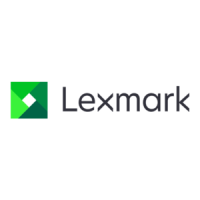C. Bar Code Support: Linear (1-D) Bar Codes
See Appendix D page 106 for information on 2-D bar code support.
Abbreviations used within the tables:
AIM USS Automatic Identification Manufacturers Uniform Symbol Specification
BCD1 Entries marked with BCD1 are a part of the BCD1 Subset of the full capabilities of the
BCOCA architecture, which specifies the minimum support required of all BCOCA
receivers.
BSA data Bar Code Symbol Data
EAN European Article Numbering
HRI Human Readable Interpretation
JAN Japanese Article Numbering
MSI MSI Data Corporation
USPS United States Postal Service
POSTNET POSTal Numeric Encoding Technique (United States Postal Service)
RM4SCC Royal Mail 4 State Customer Code – also used for a Dutch modification
UPC Universal Product Code (United States)
UPC/CGPC Universal Product Code (United States) and the Canadian Grocery Product Code
Additional information may be found in the ”Bar Code Object Content Architecture (BCOCA) Reference”
(publication S544-3766-06).
Column Labels:
Type = Value for Bar Code Type
(Bar Code Symbol Descriptor Byte 12; Bar Code Data Descriptor Byte 16)
Mod = Modifier Value
(Bar Code Symbol Descriptor Byte 13; Bar code Data Descriptor Byte 17)
Type Bar Code Type Mod Description
X’01’
Code 3 of 9,
AIM USS-39,
(BCD1)
X’01’
X’02’
The Standard Code 3 of 9 character set and Extended Code 3 of
9 character set are supported. Also known as Code 39.
Print the bar code without a printer generated check digit.
Generate check digit and print it with the bar code.
X’02’
MSI (modified
Plessey code
(BCD1)
X’01’
X’02’
--------
X’03’
Print the bar code with no printer generated check digits.
Print the bar code with a generated IBM modulo-10 check digit,
which will be the second check digit (at end of data). The first
check digit is the last byte of the BSA data.
------------------------------------------------------------------------------
All of the following variants print the bar code with two check
digits.
Both check digits are generated using the IBM modulo-10
algorithm.
98

